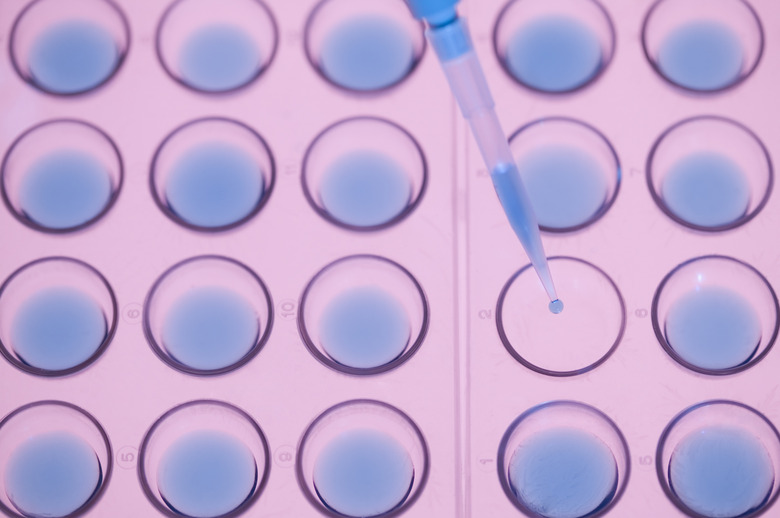How To Grow E. Coli In A Petri Dish
Escherichia coli, E. coli, is a bacterium that grows in the lower intestines of mammals. This bacteria was first discovered in the late 1800's. Since then, it has had a long history of use in scientific research. It is the most widely used organism in molecular genetics. Part of the reason E. coli is commonly used in scientific research is that it is easy to grow in a lab. The factors that make E. coli easy to grow are its simple nutritional needs, fast growth rate and its moderate maintenance requirements.
Step 1
Sterilize the inoculating loop by placing it in the flame of the Bunsen burner. Pass the lower half of the loop through the flame until it glows red.
Step 2
Allow the loop to cool. You can touch it to the sterile agar on the plate to make sure it has cooled down. Do not place the loop on the table or let it contact anything other than sterile agar or the desired culture now that it has been sterilized.
Step 3
Dip the loop into the E. coli culture and then remove it.
Step 4
Open the agar plate and gently glide the loop back and forth across the surface of one section of the agar. Take care to not scratch through the agar with the loop. The agar provides the nutrients the E. coli need to grow.
Step 5
Place the loop in the Bunsen burner flame again to sterilize it. Once the loop rod cools, touch it to a sterile section of the plate to make sure it is cool, then glide the loop through your first streak to make a second streak. This second streak is a diluted version of the first streak. Repeat this sterilization and gliding process until several sections of the agar plate have been glided over. The reason you do this is so you can later pick from single, clonal colonies. This will help make sure you have at least one section that has individual colonies– not too concentrated (which will have too much growth, and not allow you to pick from a single colony) and not too dilute (which would give no colonies).
Step 6
Sterilize the loop in the flame one last time before putting it aside in the work area.
Step 7
Put the top back onto the agar plate. Turn the plate upside down and place it into the incubator set to 37 degrees Celsius (98.6 degrees Fahrenheit). This ideal incubating temperature simulates the temperature of the human body where E. coli resides. Within 24 to 48 hours, visible colonies of E. coli bacteria will appear in the agar plate.
Things Needed
- Petri dish
- Incubator
- Nutrient agar plate
- E. coli culture
- Inoculating loop
- Bunsen burner
Warning
Proper containment of the E. coli samples and sterilization of the inoculation loop will reduce the chance of spreading the bacteria. No food or drink should be consumed in the experiment area. Wearing gloves will further reduce the risk of hand contamination.
Cite This Article
MLA
Parker, Michael. "How To Grow E. Coli In A Petri Dish" sciencing.com, https://www.sciencing.com/grow-ecoli-petri-dish-5534225/. 13 March 2018.
APA
Parker, Michael. (2018, March 13). How To Grow E. Coli In A Petri Dish. sciencing.com. Retrieved from https://www.sciencing.com/grow-ecoli-petri-dish-5534225/
Chicago
Parker, Michael. How To Grow E. Coli In A Petri Dish last modified August 30, 2022. https://www.sciencing.com/grow-ecoli-petri-dish-5534225/
